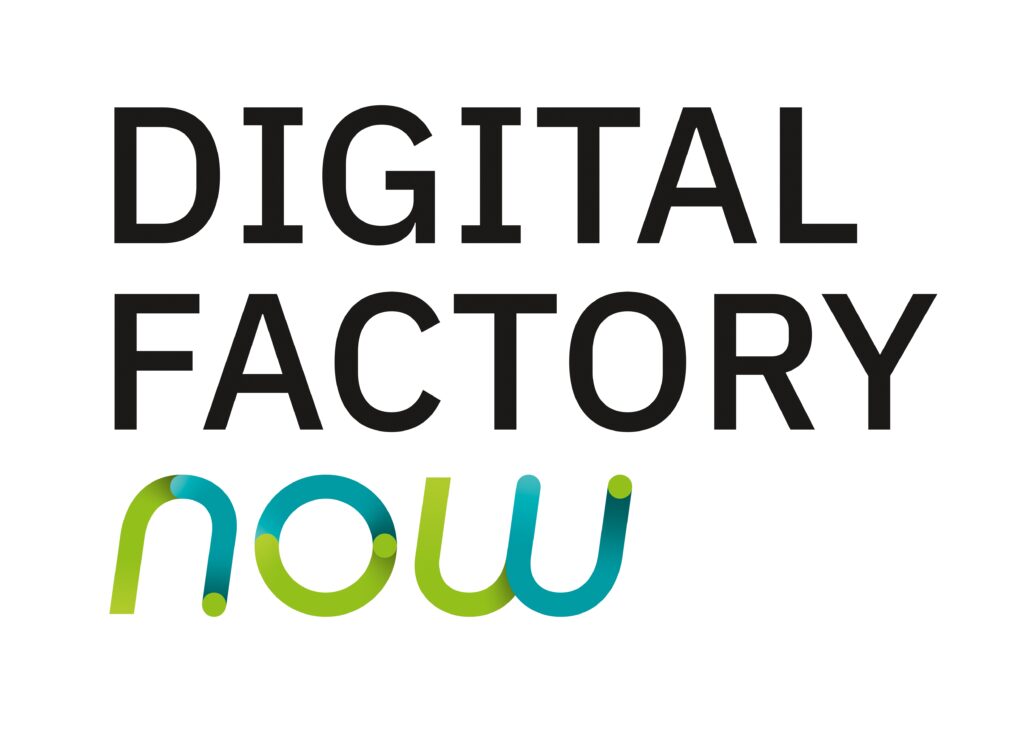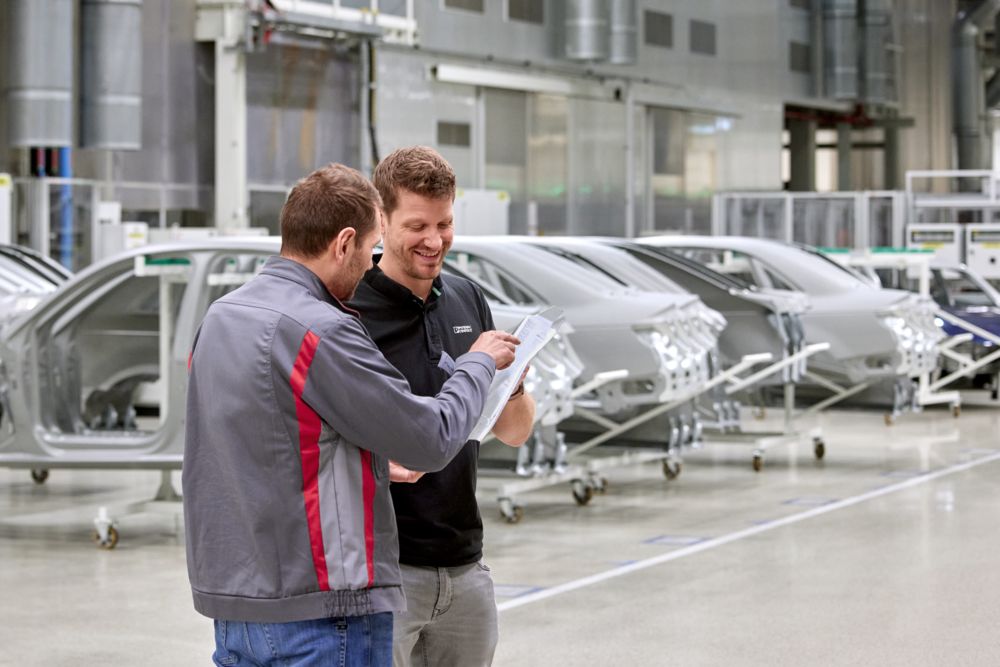
With open automation into the electrified future
Audi relies on PLCnext Technology at its Ingolstadt site for the body shop of the all-electric Audi Q6 e-tron series. In addition to numerous functions for IIoT applications, the open ecosystem also offers integrated cyber security in accordance with the international IEC 62443-4-2 standard. Read in this article about open automation for electric car production at Audi and get inspired by its possibilities.
Phoenix Contact supports the transition to greater sustainability by providing key technologies for electrification, networking, and automation. PLCnext Technology is one of these technologies. Our open ecosystem has a large number of interfaces from the sensor to the cloud. In this way, it contributes to the continuous flow of information in CO2-neutral production. In addition to the standard programming of PLC systems in accordance with IEC 61131-3, PLCnext Technology also enables the parallel use of high-level languages such as C/C++, C# or Matlab Simulink. Both languages run in combination in real time on the PLCnext Control family. This means that production benefits from the expertise of both IT and OT specialists. The ecosystem thus also contributes to the change in the automation of production facilities at Audi.
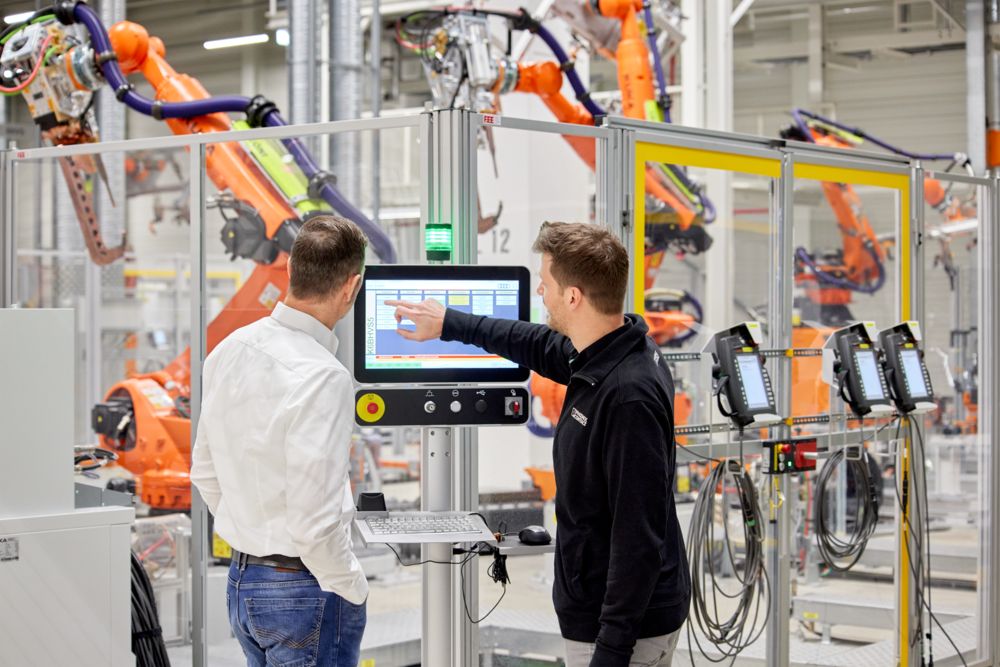
Improving the greenhouse gas balance through optimized production processes
Even during vehicle production, it is important to keep the energy footprint as neutral as possible. That is why Audi has set itself the goal of achieving CO2-neutral production at all sites by 2025. This target has been achieved at the Ingolstadt site since the beginning of 2024. In the body shop in particular, it is important to improve emission values through influencing factors such as quality, availability and adaptability. Every no load or every ejection of a body from the manufacturing process not only results in costs: the production-related GHG balance also increases.
To prevent this from happening, Audi uses numerous measures such as shutdowns during idle times or the use of communication-capable energy meters – for example the multifunctional EEM-MA 370 measuring device from Phoenix Contact – to monitor consumption. Further optimization at this point requires transparency about the energy flows and information that announces a fault as soon as it occurs. Even the smallest deviations from quality, which are displayed at an early stage, can make a decisive contribution here. Identifying additional potential for improvement in the process flow results not only in shorter cycle times, but also in the optimization of the energy balance of each individual car.
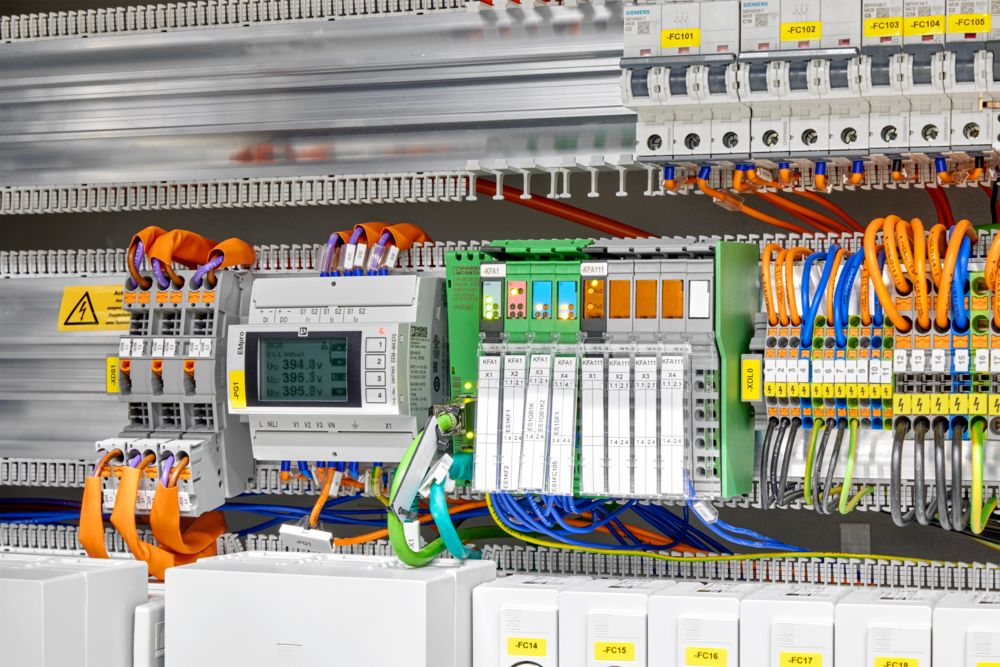
Using high-level languages in parallel
The RFC 4072S safety-related control system forms the core of the automation solution in the body shop. Its most important function is to ensure that vehicles are manufactured in a functionally safe manner. In addition to system automation, the RFC 4072S offers comprehensive diagnostics of all processes and the data relevant for communication. The IEC 61131-3 programming language, which is usually favored for the production process, is supplemented – as already mentioned – by the use of high-level languages such as C/C++ or C#, which are better suited to complex applications in a real-time context.
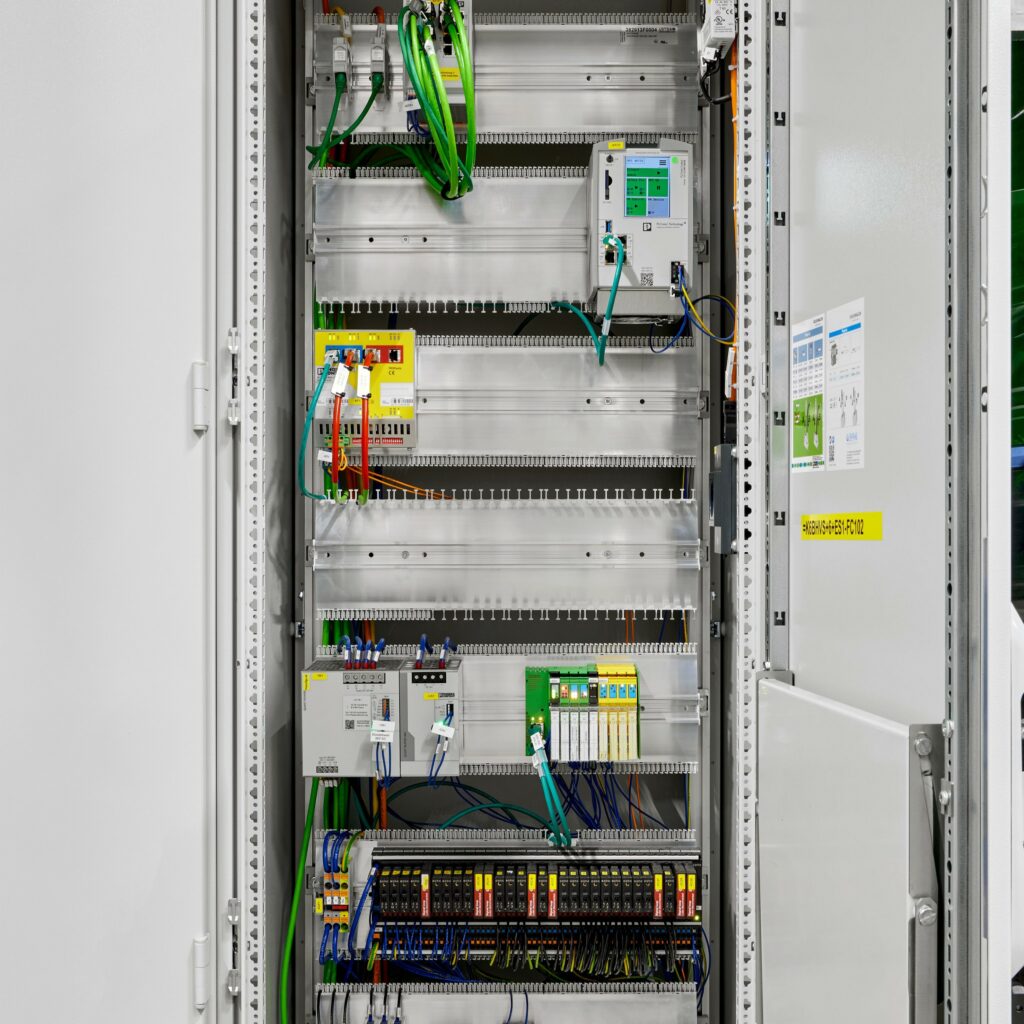
Over 30 percent time savings in creating plant visualization
In the Ingolstadt project, the standard module developed on the predecessor platform PC Worx since 2004 has been converted to the new PLCnext Technology control system. Due to the new developments, the library now includes more than 600 modules to optimally control the many processes necessary for body construction. The PLCnext Control RFC 4072S PN also supports machine safety in accordance with IEC 62061 SIL 3 and EN ISO 13849-1 PL e. To increase the consistency and integration of information, the new automation platform provides a web visualization.
A visualization assistant specifically developed for this purpose automatically generates about 98 percent of the control displays. It accesses information from the user program and creates the plant visualization using the more than 700 symbols of the newly created system library. This also applies to the conveyor systems, where only the visible areas may be operated by the staff. The generator creates an individual user interface for each part of the plant. In this context, it has been possible to reduce the creation time to one-third of the previously required duration: a significant advantage for adjustments and commissioning.
Operator stations for direct plant access
The operator stations required for plant operation are flexibly integrated into the 1-gigabit plant network via the built-in switch of a push-button box with an emergency stop button. Basicline series industrial PCs with IP65 protection are installed as main and auxiliary control panels on a stand column at the individual robot cells. Through the step chains and diagnostics displayed there, the operating and maintenance personnel have direct access to all important information, allowing them to respond quickly to events if necessary. A special feature is the control panels used in conveyor technology. The eHMI Linux clients were developed according to Audi’s specifications, with a focus on compliance with the international security standard IEC 62443 and simple update and patch management. This ensures that the maintenance of the industrial PCs is optimally integrated into the proven processes and procedures of maintenance.
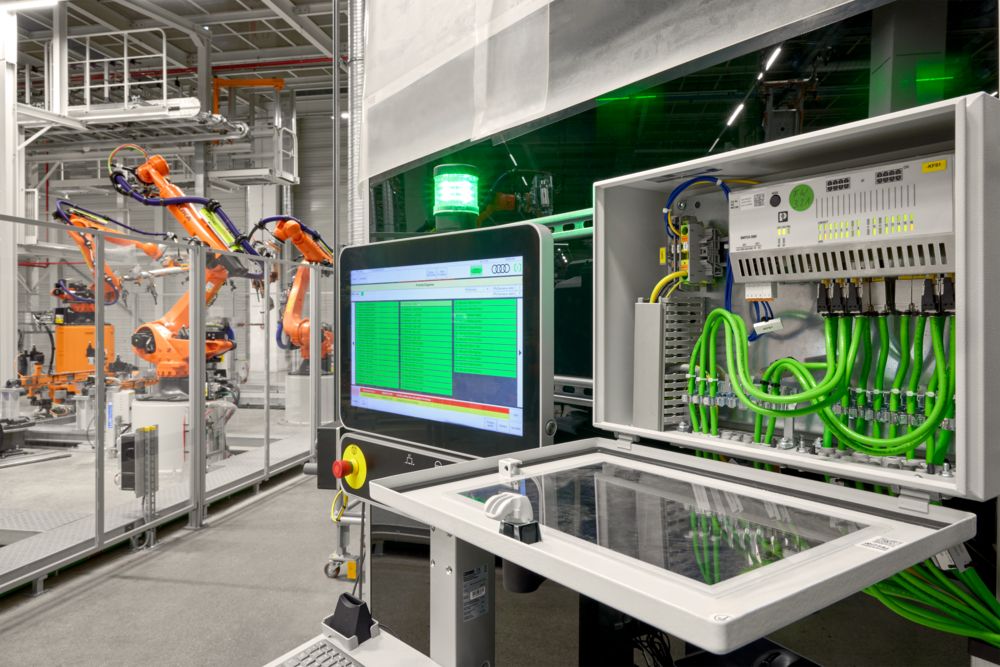
Development of a holistic security concept in accordance with IEC 62443
The steadily increasing number of information sources—such as sensors and cameras, as well as technologies to ensure processes and quality—leads to ever larger amounts of data and consequently to potential attack points that must be protected against unauthorized access. Audi therefore always accompanies such projects from a cybersecurity perspective. Specifically, this means that Audi and Phoenix Contact, as a TÜV-certified IEC 62443-3-3 Security Service Provider, developed a holistic security concept already in the planning phase of the project. The concept implements the functional system requirements of IEC 62443-2-4. Furthermore, measures were defined and implemented based on a threat analysis to enhance the security of the production area.
Optimizing manufacturing and the associated sustainability of the resources used requires data that can be securely utilized. Through smart electrification, effective networking, and open automation, Audi is laying the foundations for sustainable, future-proof production and the flexible integration of new technologies, such as machine learning.
Find out more about Digital Factory now!
